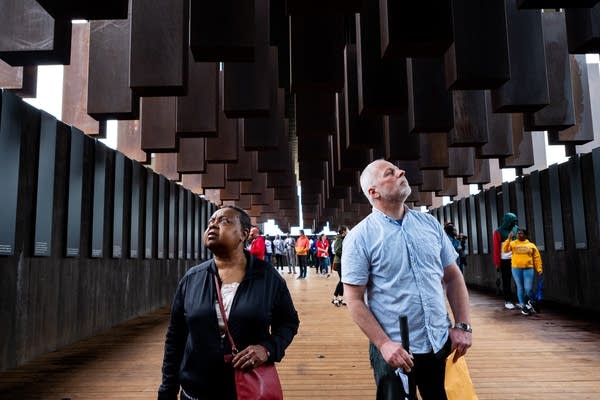Duluth lynching brings white man and black woman together 98 years later

Virginia Huston and Warren Read take in the National Memorial for Peace and Justice in Montgomery on April 26, 2018. Read traveled from Washington state and Huston from Missouri to experience it together.
Evan Frost | MPR News
Go Deeper.
Create an account or log in to save stories.
Like this?
Thanks for liking this story! We have added it to a list of your favorite stories.


